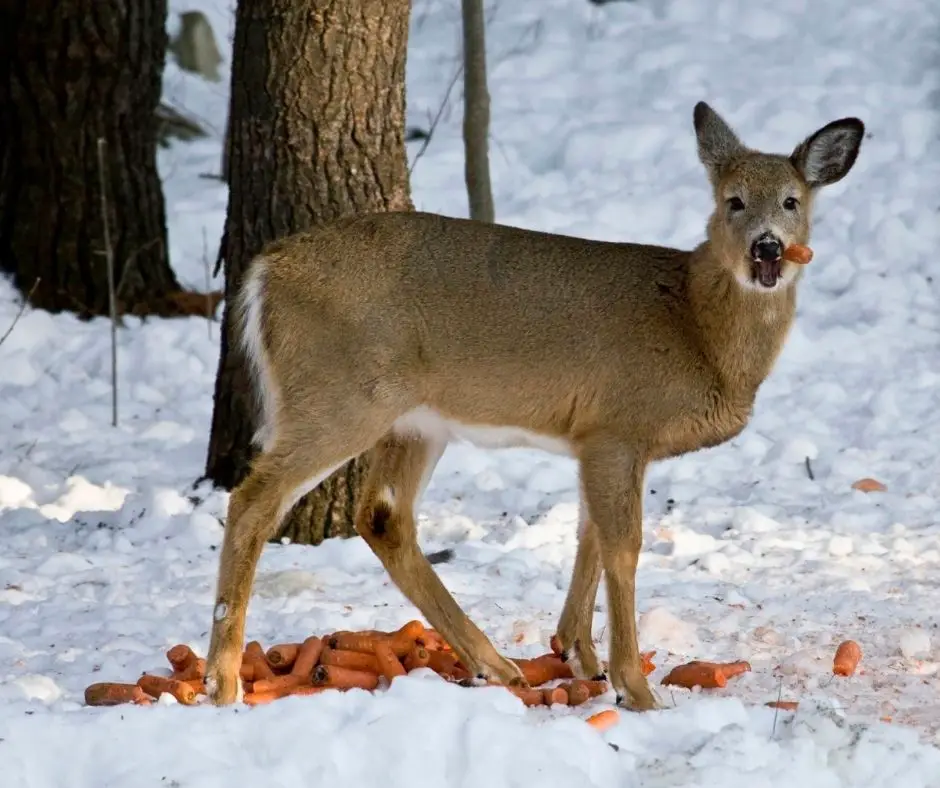What Should You Feed Deer During Winter?
Why feeding a deer is essential, especially during winter? First, feeding deer to expand their life span is crucial as it will not let them die of starvation. Another reason is that when they go through the spring season, they are more likely to give birth to the next generation. Finally, if you feed them, you will contribute to healthy and robust fawn production.
You should deliver them food on the established trail networks as this technique would be helpful for deer to get the food. Feeding them the right type and good quality of food in an adequate amount is the balanced diet. Deer Feeding is not a tough task only you should very well aware about their foods you can feed them during winters.
In this article, we are going to talk about the food and supplements you should feed to deer during the winter season because it is hard to find food in winter.

What should you feed deer during winter?
Following are some foods that you can feed the deer during the winter season:
Natural food
Deer usually suffers from acidosis and scours because they have a sensitive stomach. Any artificial feed can cause the immediate death of deer. Therefore, it is always recommended to use natural food in the beginning and then slowly introduce artificial feed.
Grasses, sedges, the leaves and shoots of trees and other woody plants are some of the best food choices. This menu does not cause any harm to the deer.
Deer pellets
Deer pellets are a high-energy balanced supplement. It is manufactured by keeping deer’s protein, energy, development, and growth in view.
Pellets are a complete source of a balanced supplement diet, which is why most farms use them. Although in the start, deer do not eat it, it is constantly introduced with some food like corn, oat, wheat, or alfalfa.
Cereals and grains
Cereals and grains are not as a complete source of food as pellets are, but it is beneficial as it does not cause any harm to deer’s stomach if suddenly introduced into their diet.
Cereals and grains are easily digestible and seem appealing to deer. Most farmers use it because it is easy to use and an excellent cool-season forage. Corn and oats are used with a ratio of 1:1 to 1:4, respectively.
Never give pure corn, wheat, or barley, as they are starch-enriched foods and can cause severe digestive problems or even sudden death.
Fruits vegetables
Feeding fruits and vegetables are like giving candy to a kid; appealing and pleasing in taste but not an excellent nutritious source.
Deer usually eats cabbage, apple, or carrot, but their supplements and nutrition are not enough. Feeding deer is not like throwing the loaf of bread or crust, but if you want to feed them, do some research, and provide them with energizing and nutritious food.
Hay and Alfafa
Hay and alfalfa are high-protein forage crops that appeal to deer and have a fantastic taste and multiple other health benefits.
Hay and alfalfa will only be a good choice if it is introduced gradually with some natural food. If deer go through starvation and eat hay or alfalfa, they may have severe digestive problems.
Tips for feeding deer
Whenever you decide to feed the deer, always remember to
- Take extra supplements with you. This will make it a beautiful spot.
- Add a water plot near the food source, which will make them stick to their territory and minimize the risk of attack.
- After providing them with food and water, add an extra coverage feature. This will attract them and reduce the reasons to leave the place.
- Add a camera so you can observe their behaviors and meet their needs.